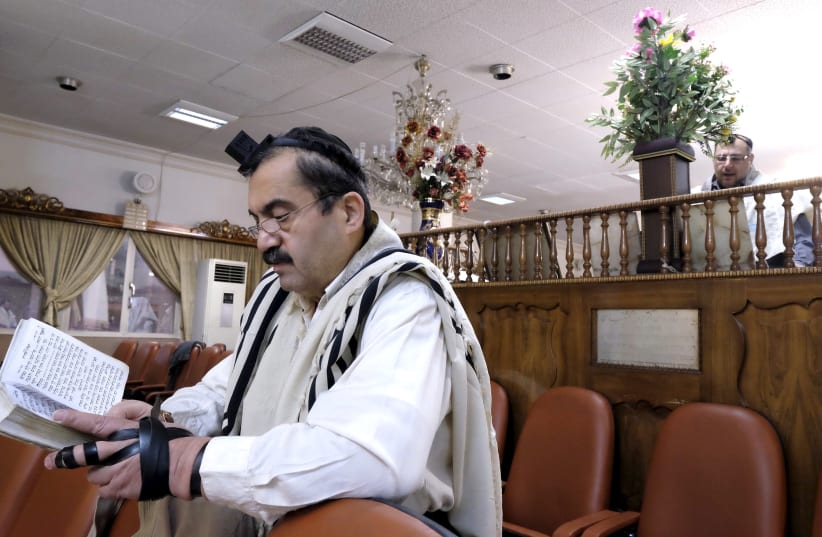On January 13, The Globe and Mail, one of Canada’s most widely read daily newspapers, published an article by the travel essayist and novelist Pico Iyer, about a recent trip that he took to Iran. Iyer emphasized the ambiguities (false surfaces) and mixed messages that he encountered, including being told repeatedly that Iran is home to the largest Jewish population in the Middle East, outside of Israel.
To verify whether this is true, I consulted data provided by the Israeli demographer Sergio DellaPergola (World Jewish Population 2014, The Hebrew University of Jerusalem). It turns out that there are about 8,300 Jews in Iran today, out of a population of more than 81 million. The Jewish population used to be much larger, but today the vast majority of Jews with Iranian ancestry, about a quarter of a million, live in Israel, with another 60,000 in the United States.
What Iyer was told is not quite right. The largest number of Jews in the Middle East, outside of Israel, live in Turkey (14,800 out of a population of more than 81 million). There are about 2,000 Jews in Morocco, the remnant of what was once an old and much larger population, and perhaps 1,000 in Tunisia. That’s it. The rest of the countries in the Middle East contain very few if any Jews.
The Middle East used to have a lot more Jews outside of Israel
But it wasn’t always so. Not that long ago, the Middle East, outside the British Mandate of Palestine, included almost a million Jews. On May 16, 1948, two days after the Declaration of Independence of Israel, The New York Times published a major article by Mallory Browne that carried the headline, “Jews In Grave Danger In All Moslem Lands: Nine Hundred Thousand in Africa and Asia Face Wrath of Their Foes.”
Mallory Browne’s warning was a prescient one. Over the next number of years, almost all of the Jews in North African and Asian Muslim countries were brutally uprooted, often leaving behind all their assets, as well as memories and traditions going back, in some cases, millennia. Most of them ended up in Israel. Today, they and their descendants make up more than one-half of the more than seven million Jews in the country.
IN THE 2022 book, The Arc of a Covenant – The United States, Israel and the Fate of the Jewish People, Walter Russell Mead, an academic and columnist for The Wall Street Journal, emphasizes that most Jewish Israelis are Middle Eastern and not European in origin. They either fled or were driven out of their homes in Arab countries after brutal mistreatment and unconscionable discrimination.
No one speaks of compensation for these refugees, no one commiserates with them and no one seeks to hold anyone to account for the crimes committed against them. Mead attributes the rightward shift in Israeli politics after 1980 in large part to these refugees, a community whose suffering and losses are a matter of near-universal indifference around the world.
From the Allahad pogrom of 1839, which accompanied the forced conversion to Islam by the entire Jewish community of Mashad, to the blood libel pogrom in Shiraz in 1910, Iranian Jews experienced debilitating discrimination and severe persecution throughout the 19th century and into the beginning of the 20th.
This was well before the 1948 establishment of Israel. Some made Aliyah during this time and it is estimated that 20,000 Iranian Jews were living in Israel when the state was declared (Amnon Netzer, Encyclopedia Judaica).
The months of recent protests in Iran, resulting from the death of a young Iranian woman arrested for not wearing a hijab, have produced a vicious government reaction (Matthew Nouriel, Forward, 2022). Close to 500 protesters have been killed, two executed after torture and many thousands arrested.
Five Iranian Jews were arrested, highlighting the precarious status of the remaining Iranian-Jewish community. In effect, the Jews of Iran and other religious minorities are hostages to the cynical aims of the ruling regime.
These comments are not meant as a criticism of Iyer’s article in the Globe but rather of the boast made to him that there are more Jews in Iran than any other country in the Middle East, other than Israel. It made me think of my favorite example of the meaning of the Hebrew/Yiddish word chutzpah. It’s like the man who killed his parents and then pleaded for mercy from the court because he was an orphan.
The writer is a Fellow of the Royal Society of Canada and a retired professor from University of Waterloo.
